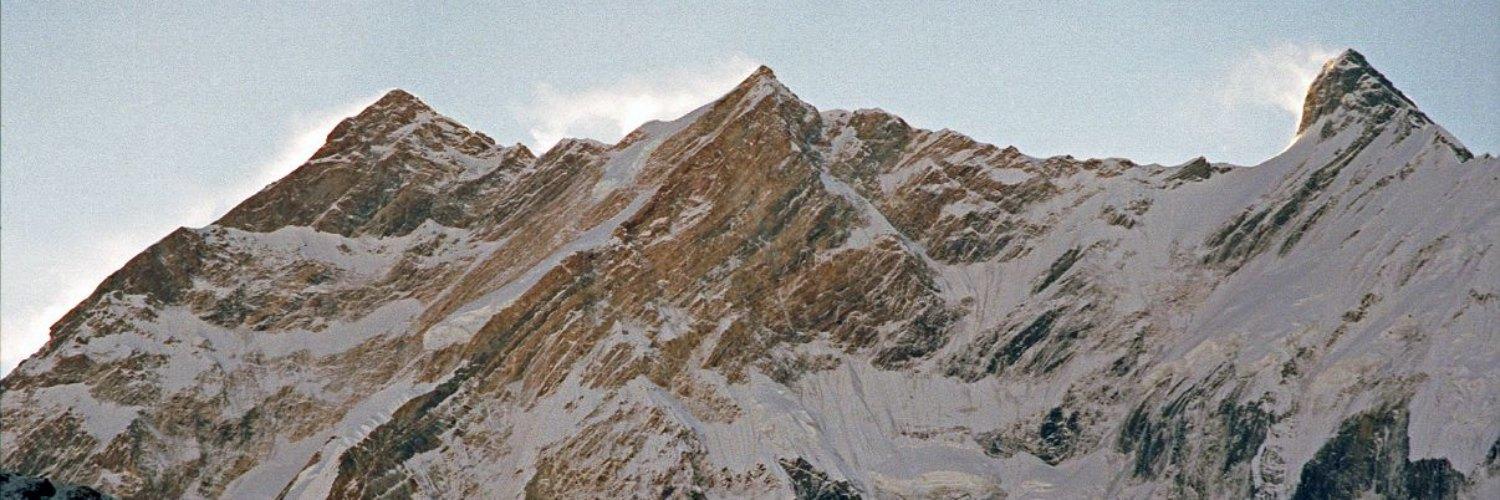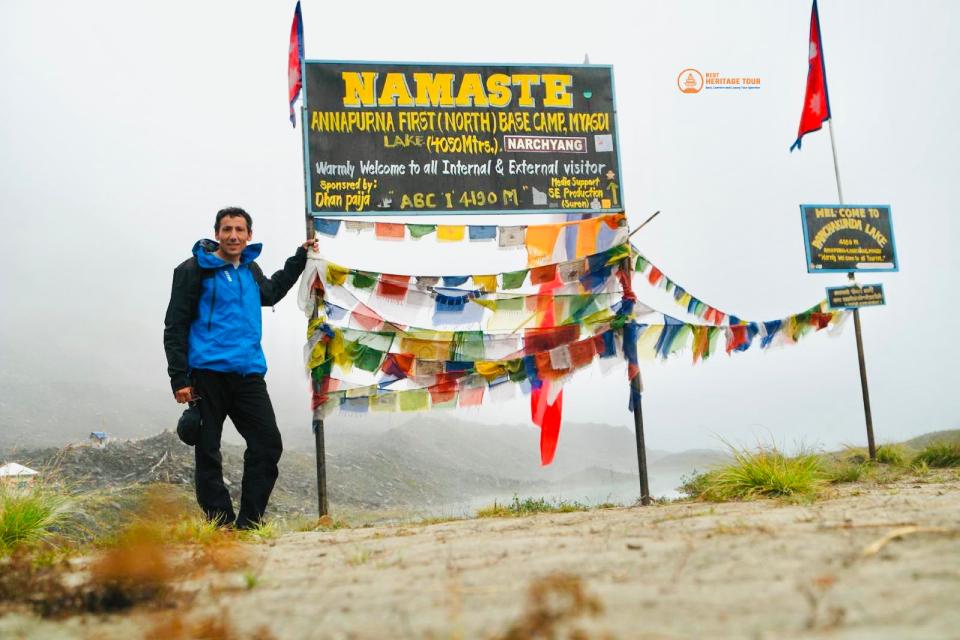Nestled deep within the heart of the Himalayas, the Annapurna North Base Camp Trek - also known as the Annapurna I Base Camp Trek - is one of Nepal’s most untouched and awe-inspiring trekking adventures. Unlike the popular south base camp route, this northern trail leads explorers to the very base of Mount Annapurna I (8,091m), the 10th highest mountain in the world and the first 8,000-meter peak ever climbed.
This trek remains a hidden gem, offering raw natural beauty, pristine alpine wilderness, and a rare sense of solitude. If you’ve ever dreamt of standing beneath towering Himalayan walls untouched by crowds, this is your trail.
In this complete Annapurna North Base Camp trekking guide, you’ll discover everything you need to know before embarking on this extraordinary Himalayan journey - from preparation tips and ideal seasons to safety insights and what makes this route truly special.
Understanding the Annapurna North Base Camp Trek
Where Exactly Is Annapurna North Base Camp?
The Annapurna North Base Camp sits in the Myagdi district of western Nepal, accessed primarily from the village of Narchyang near Tatopani. The route follows the Myagdi River upstream, weaving through dense forests, glacial valleys, and dramatic mountain landscapes before opening into the majestic base camp beneath Annapurna I.
Unlike the southern approach through Chhomrong and Machhapuchhre Base Camp, this trail ventures into remote and less developed regions, where the raw charm of the Himalayas remains preserved.
Why Choose the North Side?
The north side of Annapurna offers trekkers a rare wilderness experience - fewer lodges, minimal human interference, and breathtaking views of Annapurna I’s north face. For trekkers seeking challenge, authenticity, and solitude, this trail embodies the spirit of true adventure.
Highlights of the Annapurna North Base Camp Trek
-
Witness the north face of Annapurna I, one of the most powerful mountain panoramas in the Himalayas.
-
Experience the less-crowded and untouched side of the Annapurna region.
-
Trek through lush forests, roaring rivers, and high-altitude glaciers.
-
Discover authentic Magar and Gurung villages, preserving traditional Himalayan lifestyles.
-
Ideal for experienced trekkers seeking a challenging yet rewarding journey.
Best Time for the Annapurna North Base Camp Trek
1. Spring (March to May)
Spring brings the mountains to life with vibrant rhododendron blooms, mild temperatures, and relatively stable weather. The skies remain clear, and the days are perfect for trekking.
2. Autumn (September to November)
Autumn is traditionally the best season for trekking in Nepal. The monsoon clears the atmosphere, offering spectacular visibility of the snow-clad peaks. Trails are dry, and the temperatures are moderate - making it ideal for long days of exploration.
3. Winter (December to Early February)
For experienced trekkers, winter offers crystal-clear views and total solitude, but also extreme cold and snow above 3,000 meters. Trekking during this period requires proper gear and guidance from seasoned professionals like Best Heritage Tour to ensure safety and comfort.
4. Monsoon (June to August)
Monsoon trekking is generally not recommended, as heavy rainfall can make trails slippery, obscure mountain views, and increase the risk of landslides.
Physical Preparation and Fitness Level
The Annapurna North Base Camp Trek is graded as moderate to challenging. Trekkers should be in good physical condition with prior hiking experience. The trail includes long ascents, rocky terrain, and occasional high-altitude sections.
Training Tips:
-
Begin a fitness routine at least 4-6 weeks before your trek.
-
Focus on cardio exercises (running, hiking, cycling) to build stamina.
-
Include strength training for legs and core stability.
-
Practice walking with a daypack to simulate trekking conditions.
Remember, fitness not only enhances performance but also helps reduce the effects of altitude.
Altitude and Acclimatization
The Annapurna North Base Camp reaches altitudes of around 4,190 meters (13,746 ft). Although the elevation is not as high as some other treks, altitude sickness can still affect anyone.
Tips for Safe Acclimatization:
-
Ascend gradually - avoid gaining more than 500-600 meters per day.
-
Stay hydrated and eat well-balanced meals.
-
Avoid alcohol and smoking during the trek.
-
Inform your guide immediately if you feel dizzy, nauseous, or unusually fatigued.
Professional guides from Best Heritage Tour are well-trained in altitude safety and carry necessary first-aid equipment for emergencies.
Packing and Gear Recommendations
Packing smart is crucial for comfort and safety on this trek. Here’s what to include:
Clothing
-
Moisture-wicking base layers
-
Fleece or down mid-layers for warmth
-
Waterproof and windproof outer shell
-
Trekking pants and thermal leggings
-
Warm hat, gloves, and buff/scarf
-
Sturdy trekking boots with ankle support
Essentials
-
Sleeping bag rated to -10°C (some teahouses may not have sufficient blankets)
-
Trekking poles for steep sections
-
Headlamp with spare batteries
-
Sunglasses and sunscreen
-
First-aid kit with personal medications
-
Refillable water bottle or hydration pack
Pro Tip:
Pack light but don’t compromise on warmth or waterproofing - conditions can change quickly at high altitudes.
Accommodation and Food During the Trek
Because this route is relatively less commercialized, accommodation is basic compared to popular trails like Annapurna Circuit. Expect simple teahouses or camping arrangements managed by your trekking agency.
Meals typically include hearty Nepali staples such as Dal Bhat (rice and lentils), soups, noodles, and tea - enough to keep your energy high.
When trekking with Best Heritage Tour, all meals, tents, and kitchen staff are arranged professionally, ensuring hygiene and comfort even in remote areas.
Challenges of the Annapurna North Base Camp Trek
1. Remote and Rugged Terrain
The trail is less developed, meaning fewer facilities and longer walking days. It’s crucial to be mentally prepared for raw adventure.
2. Weather Variability
High-altitude conditions can change rapidly - from sunny mornings to snow flurries by afternoon. Carry proper gear and rely on experienced local guides who know how to navigate such shifts safely.
3. Limited Communication
Cell service can be weak or non-existent in many parts of the route. Having a satellite phone or guide communication system through your trekking agency is recommended.
4. Physical and Mental Endurance
This trek demands endurance, determination, and a love for wilderness. The challenges, however, are rewarded with unmatched views and personal accomplishment.
Permits and Regulations
To trek to Annapurna North Base Camp, you’ll need the following permits:
-
TIMS Card (Trekkers’ Information Management System)
-
Annapurna Conservation Area Permit (ACAP)
When booking through Best Heritage Tour, these permits are arranged on your behalf, saving time and ensuring full compliance with government regulations.
Responsible Trekking Practices
Preserving the fragile Himalayan ecosystem is everyone’s responsibility.
-
Avoid single-use plastics; carry reusable bottles.
-
Respect local culture and traditions.
-
Dispose of waste properly or bring it back to lower settlements.
-
Support local lodges and communities by purchasing local products and services.
With Best Heritage Tour, you’ll trek responsibly - ensuring your adventure contributes positively to Nepal’s mountain communities.
Photography and Experience Tips
For photographers and nature lovers, the Annapurna North Base Camp Trek offers breathtaking scenery.
Capture the Best Moments:
-
Trek early in the morning when the light is soft and golden.
-
Use a polarizing filter to reduce glare from snow and ice.
-
Protect your camera batteries from the cold by keeping them close to your body.
-
Don’t just photograph peaks - capture local life, forests, and rivers to tell a complete story.
Why Choose Best Heritage Tour for the Annapurna North Base Camp Trek
As a locally based travel company in Kathmandu, Best Heritage Tour specializes in personalized trekking experiences across Nepal. The team provides:
-
Expert local guides familiar with the Annapurna North trail.
-
Complete logistical support, including transport, permits, food, and camping arrangements.
-
Custom itineraries tailored to your pace and interests.
-
A commitment to responsible and sustainable tourism.
By choosing Best Heritage Tour, you gain not only professional service but also authentic Nepali warmth and hospitality - turning your trek into a lifetime memory.
Conclusion: Conquer the Untouched Side of Annapurna
The Annapurna North Base Camp Trek is not just a trek - it’s a journey into the raw heart of the Himalayas. For trekkers seeking something beyond the usual routes, this trail offers pristine landscapes, cultural richness, and an unfiltered sense of adventure.
Yes, it’s more remote and challenging - but that’s precisely what makes it special. With proper preparation, the right gear, and guidance from a trusted operator like Best Heritage Tour, you can safely explore this incredible Himalayan frontier and stand beneath the legendary north face of Annapurna I.
Embark on your next great Himalayan journey today and let the experts handle the rest.
Contact Best Heritage Tour
Phone / WhatsApp / Viber: +977-9851149197 | +977-9810043046
Email: info@bestheritagetour.com | bestheritagetour@gmail.com
Info & Booking: www.bestheritagetour.com
Office: Thamel Marg, Kathmandu, Nepal
Author: Best Heritage Tour
Date: 9th October, 2025


